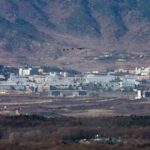North Korea’s Cruise Missiles vs. U.S. Tomahawk: Game-Changer in the Region? – Part 2
Daniel Kim Views
North Korea has launched cruise missiles five times this year alone
In a deliberate move to escalate tensions and spark military crises on the Korean Peninsula, North Korea has been drawing international attention by showcasing its strategic use of cruise missiles for ground-to-ground, ground-to-air, and ground-to-sea operations. This marks a departure from its ballistic and hypersonic missile tests, with an increased frequency of cruise missile tests—activities not currently covered by international sanctions.
Notably, North Korea’s strategy aims to broaden its missile arsenal. This includes not just ballistic missiles, recognized as weapons of mass destruction (WMD), but also precision-strike capable cruise missiles. It is seen as an attempt to overload South Korean and U.S. missile defenses.
In a provocative act just two days before the “Day of Shining Star,” commemorating Kim Jong Il’s birthday on February 16, North Korea launched several cruise missiles into the East Sea on February 14. This event marked the country’s fifth cruise missile test within the year.
Most concerning is the testing of the “Bulhwalsal-3-31” on January 28, a submarine-launched cruise missile (SLCM). This capability not only allows for concealed launch origins but also signals North Korea’s potential to arm these missiles with nuclear warheads. The introduction of such submarine-based nuclear strike capabilities represents a significant step in diversifying North Korea’s nuclear delivery methods. This development poses a considerable threat to South Korea and the U.S. military authorities, highlighting the urgent need for heightened vigilance and strengthened defense measures.
![진화하는 北 순항미사일 ‘화살’…美 토마호크 뺨친다는 초저공 비행능력[이현호 기자의 밀리터리!톡]](https://contents-cdn.viewus.co.kr/image/2024/03/CP-2023-0094/image-6cbc2dee-ae68-447c-a20c-dc00cfd15b76.jpeg)
Military authorities in South Korea and the U.S. are closely monitoring North Korea’s advancements in cruise missile technology, recognizing the strategic advantages these missiles hold. Unlike ballistic missiles, which exit the Earth’s atmosphere before following a ballistic trajectory back down, propelled by inertia, cruise missiles remain within the atmosphere throughout their flight. This fundamental difference allows cruise missiles to use jet engines that intake air and burn fuel without needing separate oxidizers.
Cruise missiles are designed to fly at low altitudes, often below the radar detection capabilities of both ground-based and maritime radar systems, which are constrained by the Earth’s curvature. The straight-line propagation of radar waves further complicates detection, as there are blind spots for objects flying low to the ground or sea surface. This “sea-skimming” technique, where missiles maintain a low altitude near the sea’s surface, means they often go undetected until it’s too late.
The capability of North Korea’s cruise missiles is increasingly seen as comparable to the U.S. Tomahawk, a missile known for signaling the commencement of U.S. military operations. The Tomahawk flies at speeds around 800 km/h. In contrast, according to available data, North Korea’s “Hwasal-1” and “Hwasal-2” cruise missiles boast speeds exceeding 700 km/h. This development underscores the growing sophistication of North Korea’s missile program and the urgent need for effective countermeasures.
![진화하는 北 순항미사일 ‘화살’…美 토마호크 뺨친다는 초저공 비행능력[이현호 기자의 밀리터리!톡]](https://contents-cdn.viewus.co.kr/image/2024/03/CP-2023-0094/image-312ebfa5-7fc7-40be-9069-8cba24551e14.jpeg)
North Korea’s advancements in long-range strategic cruise missiles, evidenced by successful test launches, have demonstrated capabilities that exceed expectations, particularly in low-altitude penetration and terrain-hugging flight. These developments have prompted military authorities to devise countermeasures urgently. In response to the intrusion of a North Korean small unmanned aerial vehicle (UAV) in late December 2022, Kim Seung Kyum, the Chairman of the Joint Chiefs of Staff, ordered the swift creation of strategies to counter North Korea’s long-range cruise missiles. The North Korean arsenal includes the “Hwasal-1” missile, with a maximum range of 1,500 km; the “Hwasal-2,” capable of reaching 2,000 km; the latest “Bulhwasal-3-31” submarine-launched strategic cruise missile (SLCM); and the new “Padasuri-6” ground-to-ship cruise missile.
The release of videos by North Korea at the end of March 2023, showcasing the long-range cruise missiles’ ability to fly at extremely low altitudes and adjust elevation over mountain ridges or along coastlines, caught military authorities off guard. The capability for “terrain-following flight”—maintaining extremely low altitudes near the ground or coastline—poses a significant challenge for detection by ground-based radar systems, highlighting the strategic threat these missiles represent.















Most Commented